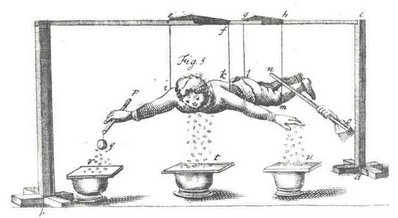
In 1730 Stephen Gray found that an orphan suspended by insulating silk cords could hold an electrostatic charge and attract small objects.
In 1845, C.H.D. Buys Ballot tested the Doppler effect by arranging for an orchestra of trumpeters to play a single sustained note on an open railroad car passing through Utrecht.
In 1746 Jean-Antoine Nollet arranged 200 Carthusian monks in a circle, each linked to his neighbor with an iron wire. Then he connected the circuit to a rudimentary electric battery.
“It is singular,” he noted, “to see the multitude of different gestures, and to hear the instantaneous exclamation of those surprised by the shock.”
